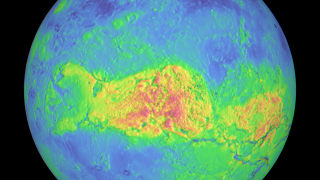Planets and Moons
ID: 10904
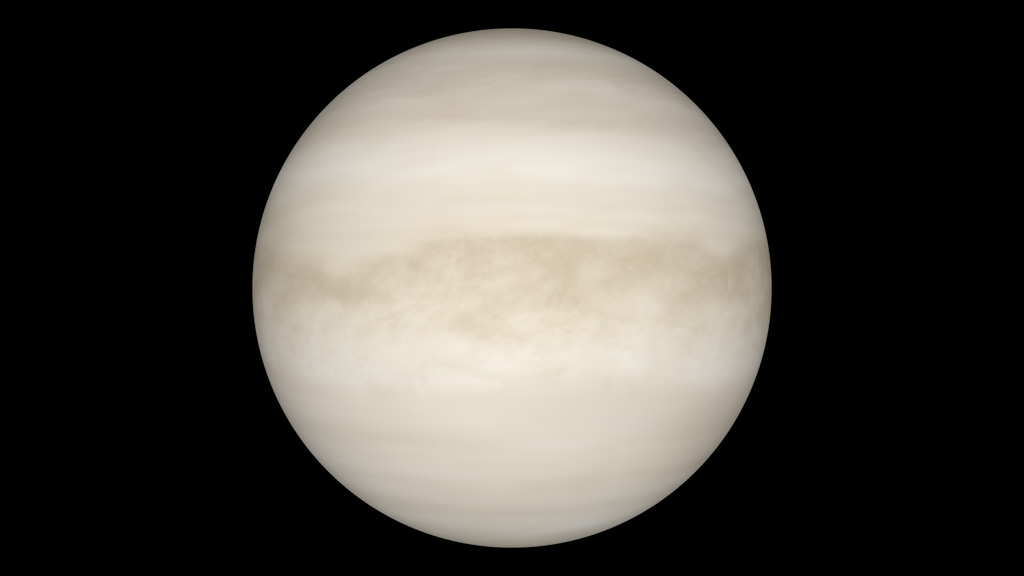
Over centuries, the planet second closest to the sun was known by many names: Ishtar, Ouaiti, Hesperus, Aphrodite. But just as with the heart's memory one name prevails. In honor of Valentine's Day, homage is paid to the celestial sphere that personifies the mythological goddess of love and beauty—Venus. Of all the planets in our solar system Venus is nearest in size to Earth, though its dry rocky landscape is much hotter. Processed images of the surface using data collected by instruments onboard NASA's Magellan spacecraft reveal vast plains intermixed with sloping highlands and ancient volcanoes. These features are highlighted on a rotating globe of Venus in the color-coded visualization below, where high elevation terrain is shaded yellow and red with low elevation regions tinted blue and green. Black gaps represent areas of the planet uncharted during the first mapping cycle made by Magellan, which surveyed Venus over a period of four years beginning in 1990.
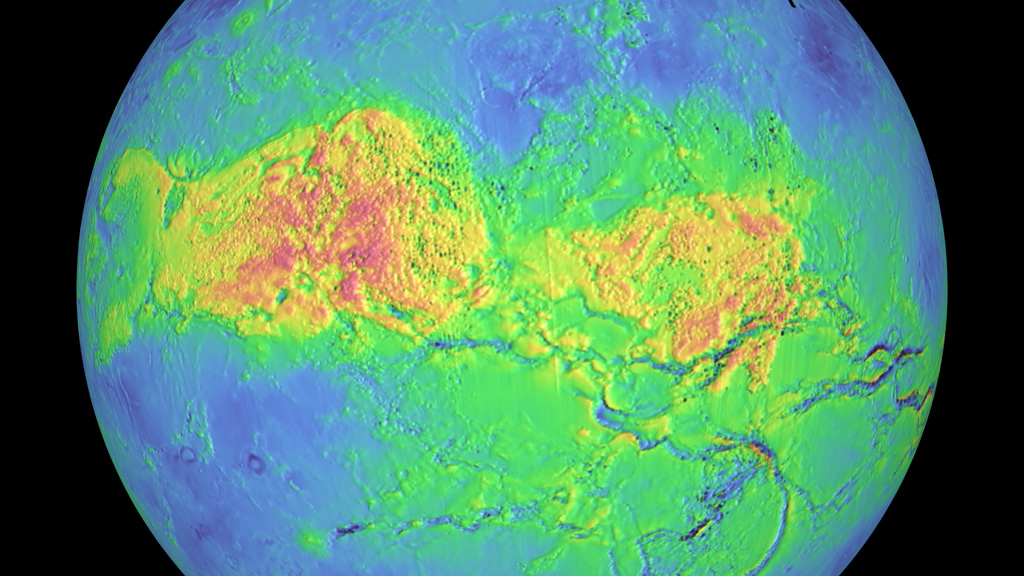
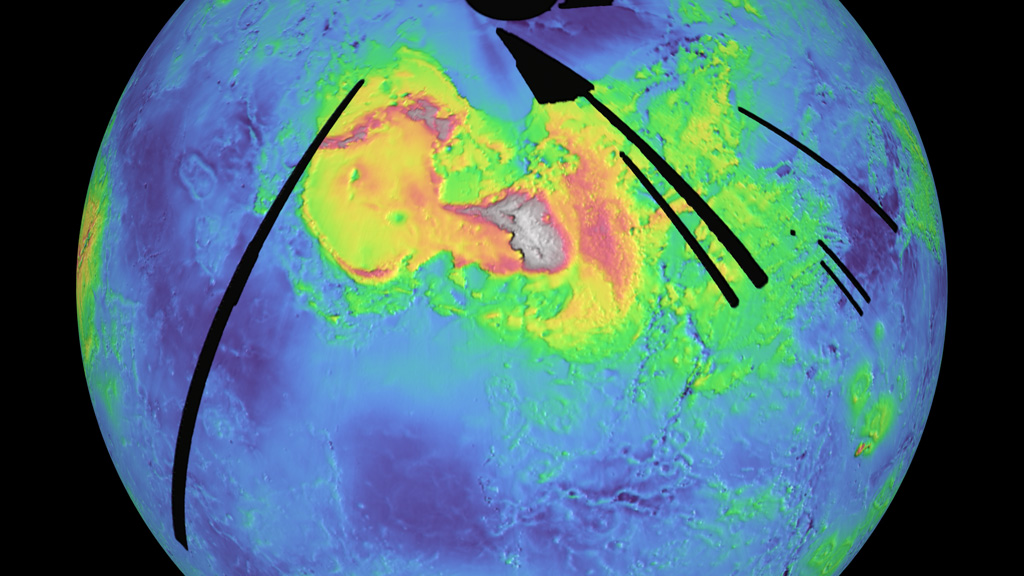
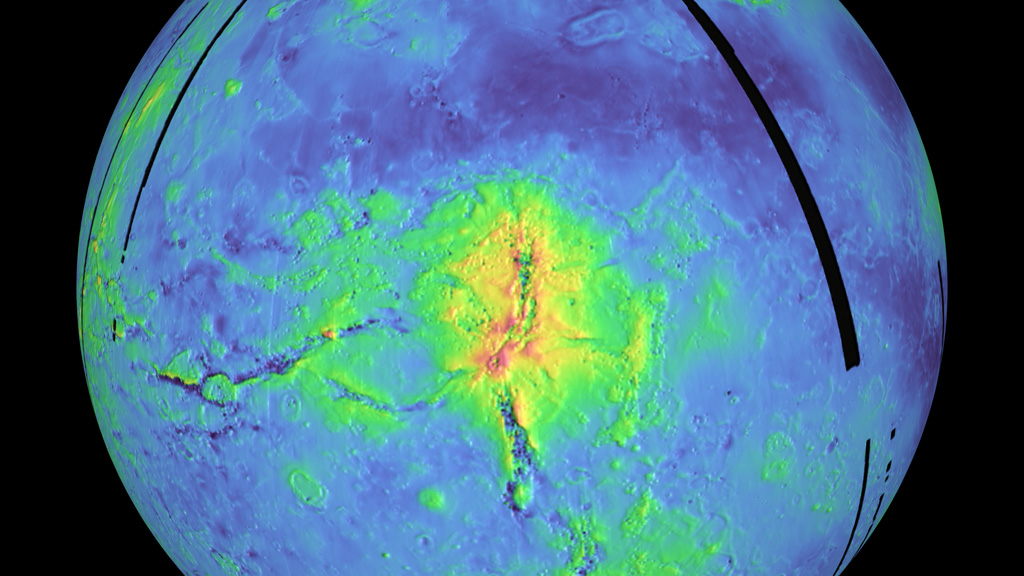
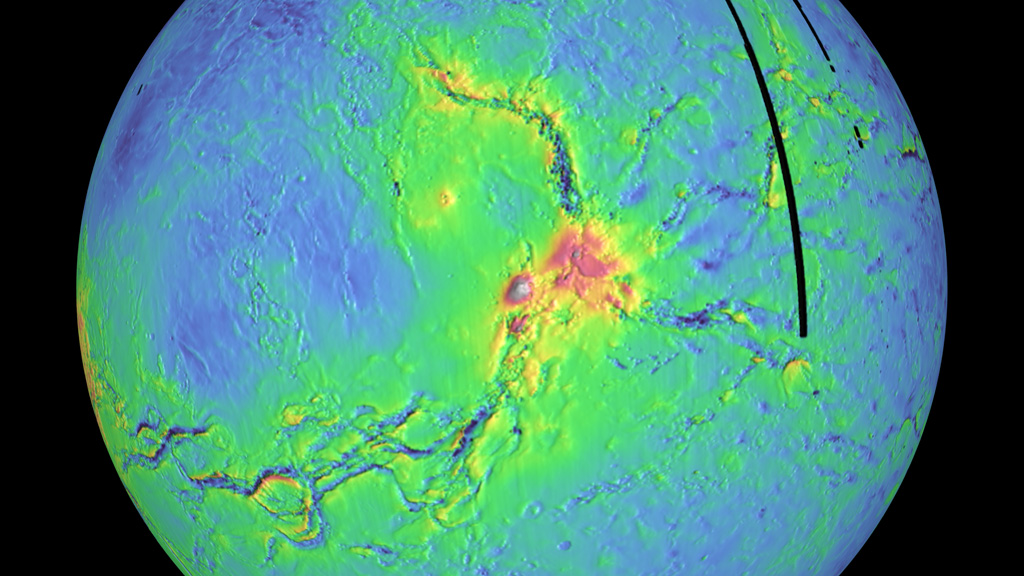
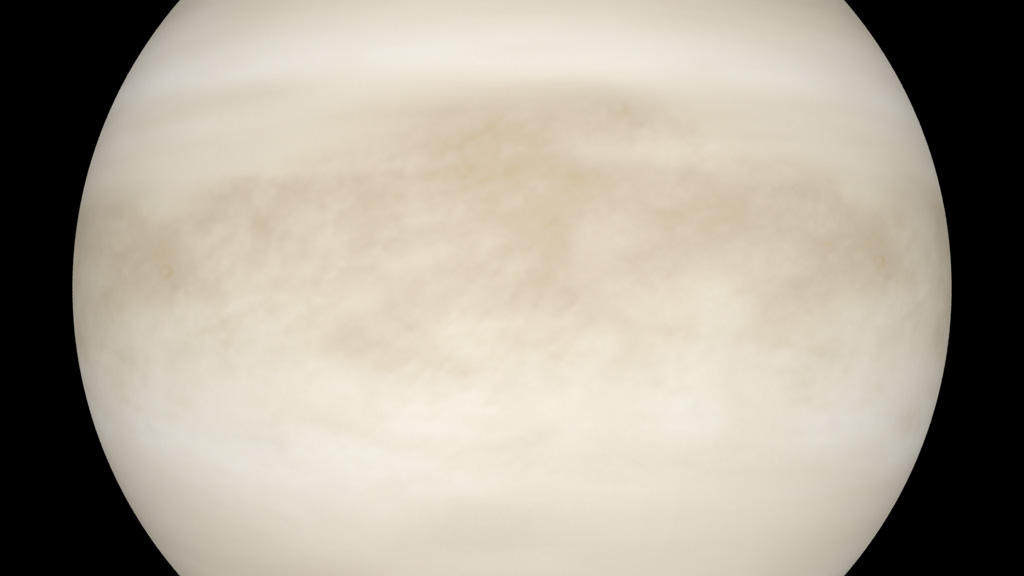
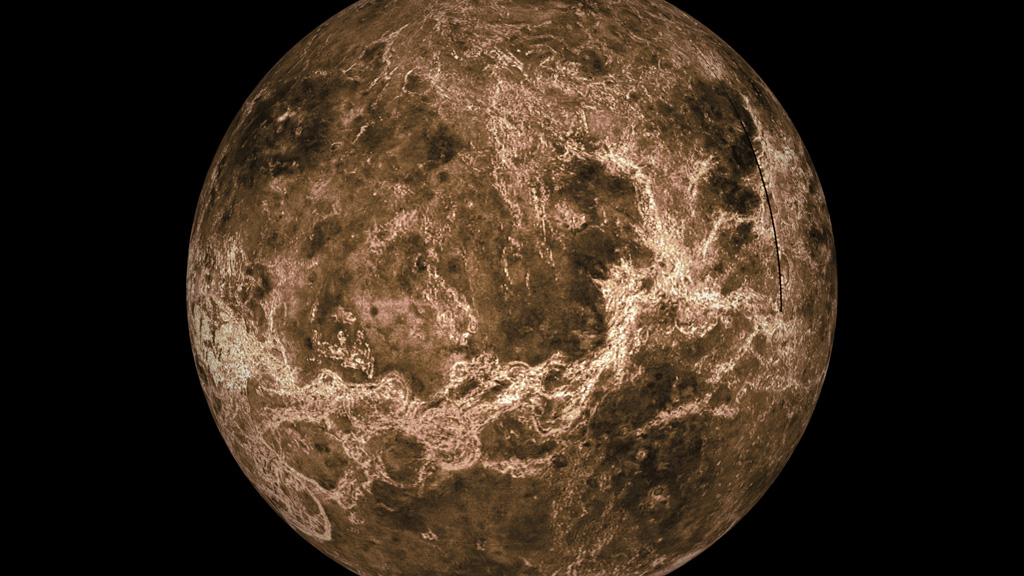
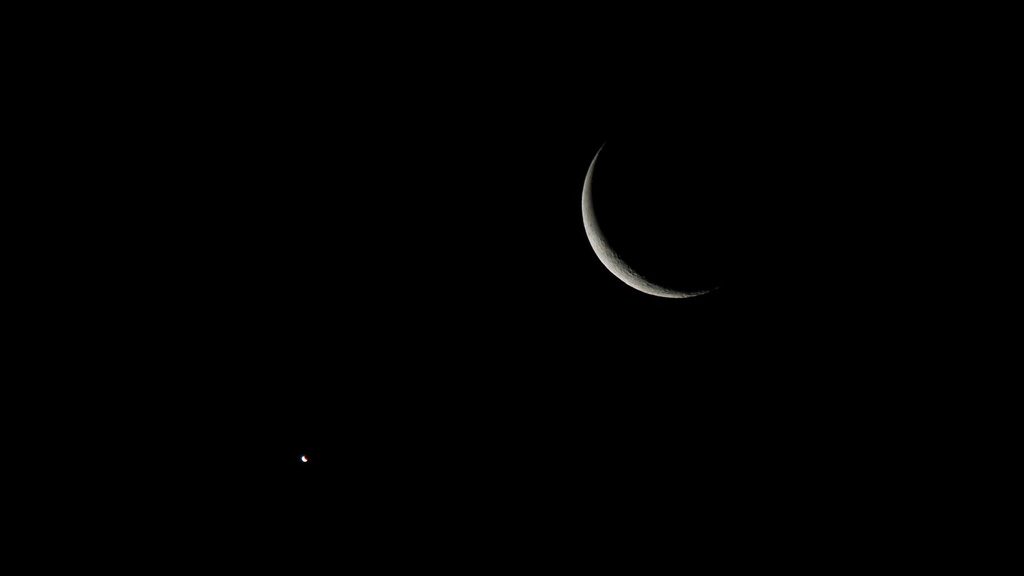
Love's Terrain








Related Story
Story Credits
Visualizer/Animator:
Ernie Wright (USRA)
Producer:
Andrew Freeberg (NASA/GSFC)
Lead Scientist:
James Garvin (NASA/GSFC)
Lead Writer:
Kayvon Sharghi (USRA)
Ernie Wright (USRA)
Producer:
Andrew Freeberg (NASA/GSFC)
Lead Scientist:
James Garvin (NASA/GSFC)
Lead Writer:
Kayvon Sharghi (USRA)
Please give credit for this item to:
NASA's Goddard Space Flight Center
Venus night sky photograph courtesy of Joby Minor, NASA/Marshall Space Flight Center
NASA's Goddard Space Flight Center
Venus night sky photograph courtesy of Joby Minor, NASA/Marshall Space Flight Center
Short URL to share this page:
https://svs.gsfc.nasa.gov/10904
Keywords:
SVS >> App
NASA Science >> Planets and Moons
https://svs.gsfc.nasa.gov/10904
Keywords:
SVS >> App
NASA Science >> Planets and Moons
